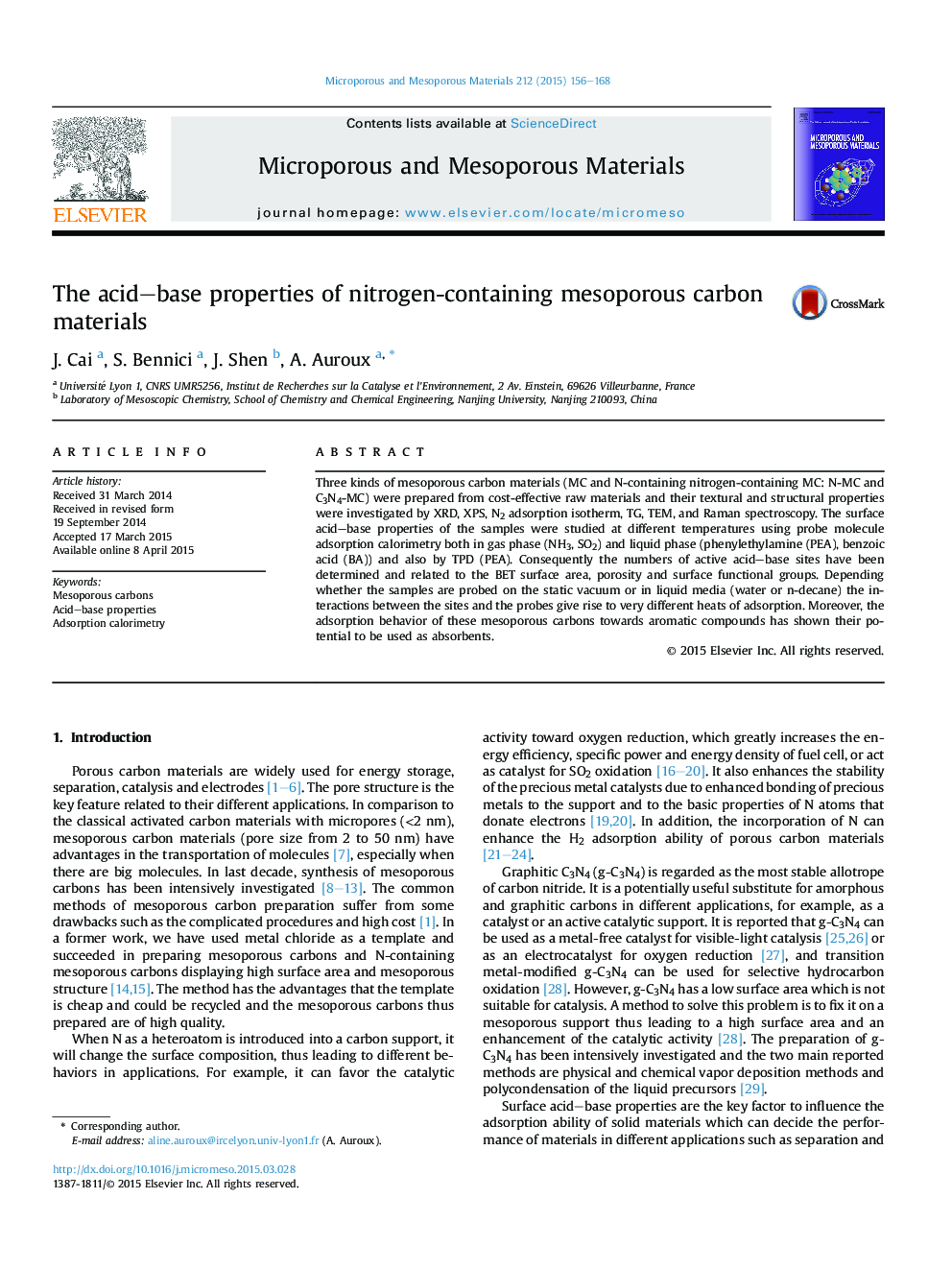| Article ID | Journal | Published Year | Pages | File Type |
|---|---|---|---|---|
| 72500 | Microporous and Mesoporous Materials | 2015 | 13 Pages |
•N and g-C3N4 were introduced into a mesoporous carbon (MC) by different ways.•In gas phase, N-MC displays the strongest acidity and basicity.•A linear relationship is found between intrinsic acid sites and BET surface area.•MC shows the strongest acidity in water.•N-MC shows the strongest basicity in liquid phase.
Three kinds of mesoporous carbon materials (MC and N-containing nitrogen-containing MC: N-MC and C3N4-MC) were prepared from cost-effective raw materials and their textural and structural properties were investigated by XRD, XPS, N2 adsorption isotherm, TG, TEM, and Raman spectroscopy. The surface acid–base properties of the samples were studied at different temperatures using probe molecule adsorption calorimetry both in gas phase (NH3, SO2) and liquid phase (phenylethylamine (PEA), benzoic acid (BA)) and also by TPD (PEA). Consequently the numbers of active acid–base sites have been determined and related to the BET surface area, porosity and surface functional groups. Depending whether the samples are probed on the static vacuum or in liquid media (water or n-decane) the interactions between the sites and the probes give rise to very different heats of adsorption. Moreover, the adsorption behavior of these mesoporous carbons towards aromatic compounds has shown their potential to be used as absorbents.
Graphical abstractFigure optionsDownload full-size imageDownload as PowerPoint slide
